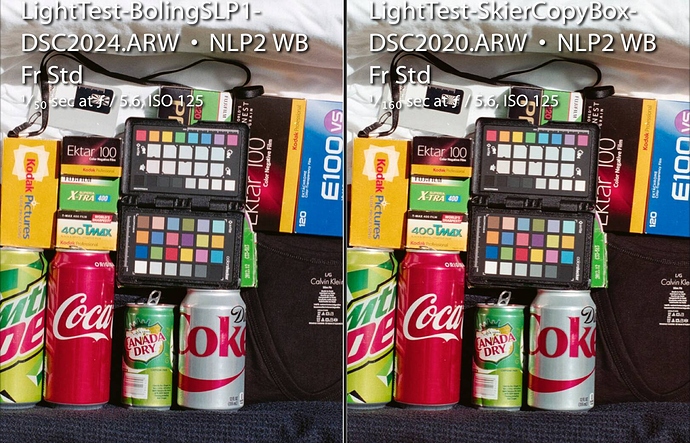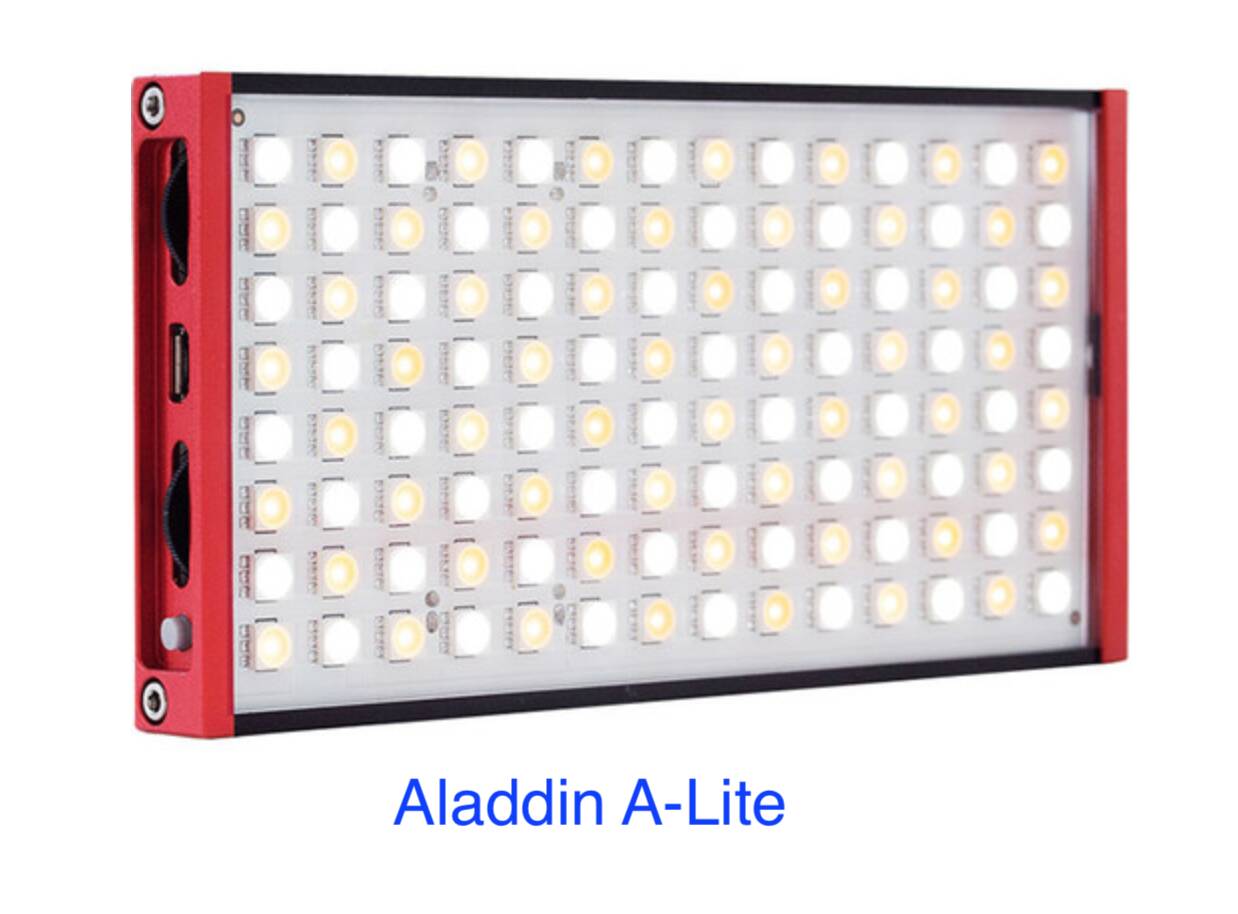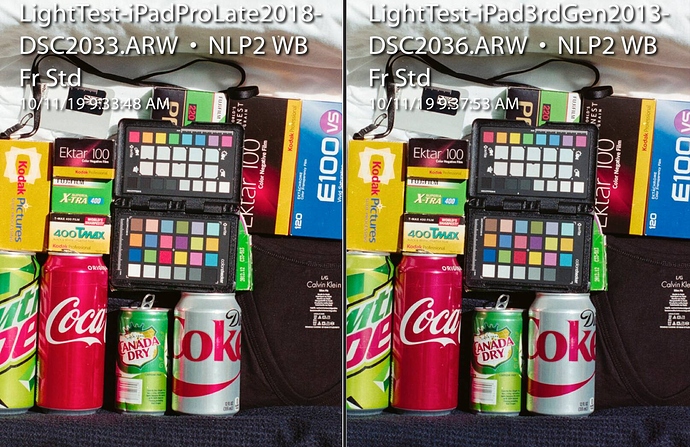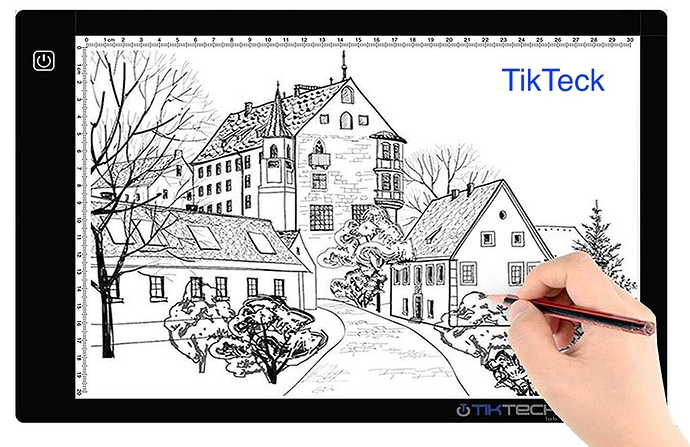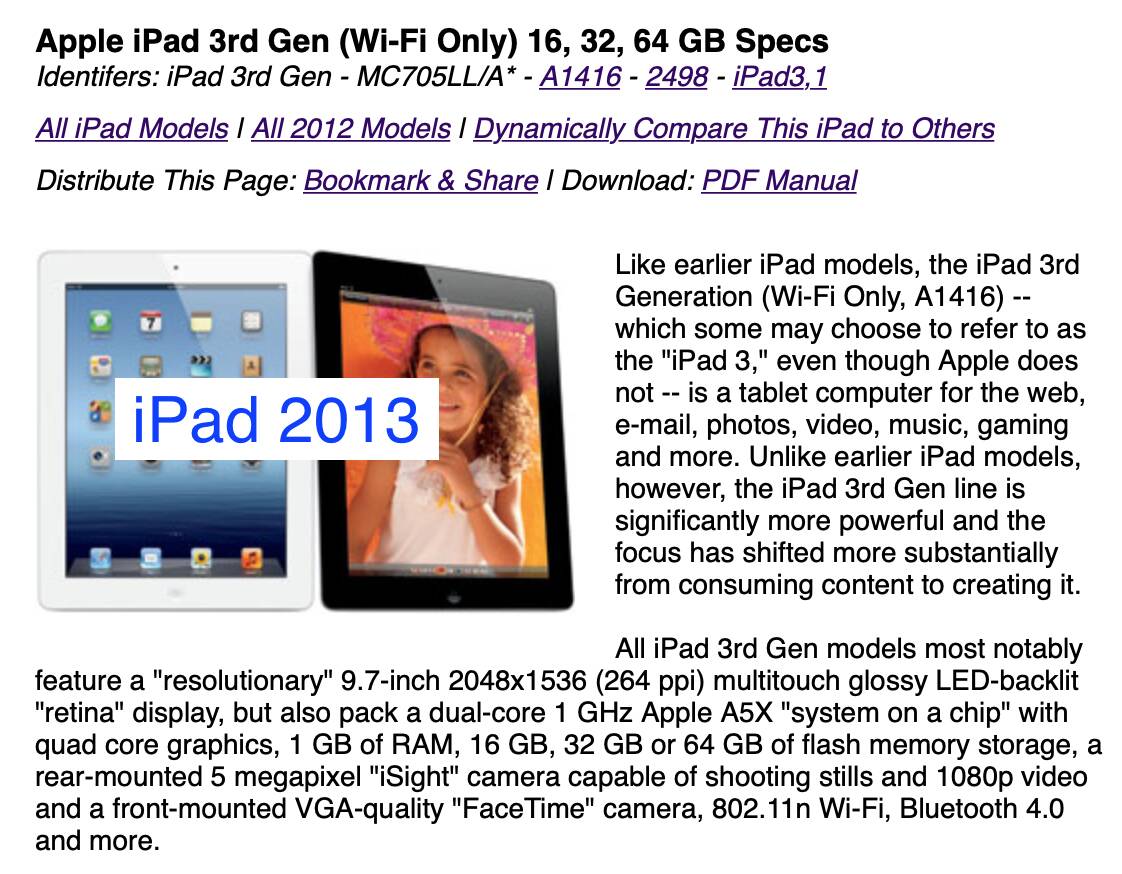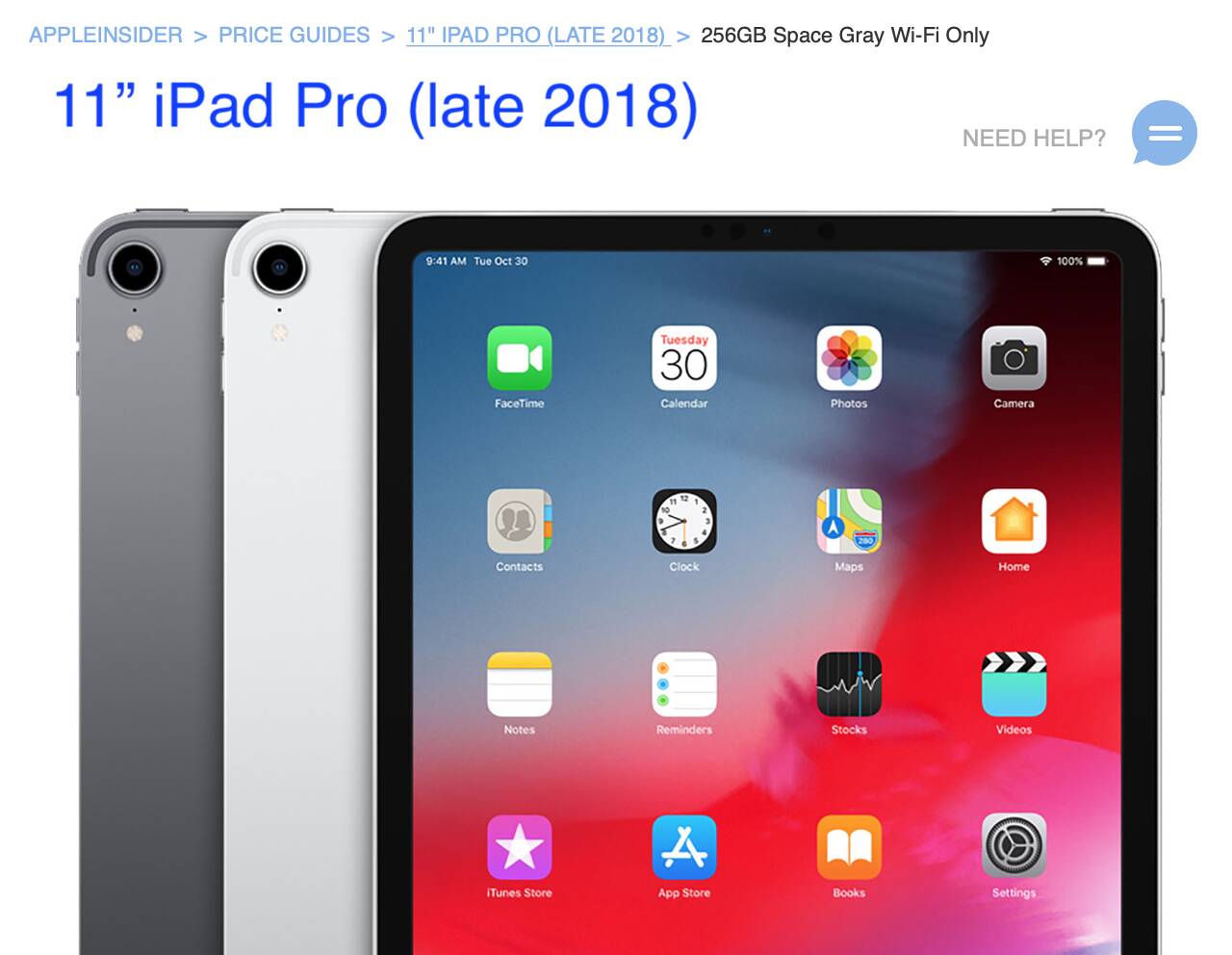Cool, thanks. What would make a suitable diffuser or can it have an impact on the scan? eg grain or colour shift. Wondering if some sort of tracing paper or sheet of acrylic would be good.
Yes, diffuser can have an impact. Key point is to hold the film a bit away from the diffuser, enough so that any texture in diffuser is well out of focus. For camera-scan of 35mm, 1/4 to 1/2" works for me. What to use? Easiest is drafting mylar, plastic sheet used for drafting. It’s translucent. Brand Dura-Lar works for me and is readily available here.
I think adding any JUST - Normlicht panel would be appropriate here ![]()
What lens are you using and what DPI are you getting?
Since an iPhone and iPad was listed, would the screen on a Mac Book work as well?
Video lights as backlight for cam-scan of negatives with NLP.
I’ve commented before on the Skier CopyBox as a good backlight source. It plugs into wall power and is quite bright. I wanted to compare compact (e.g. 3x5") video lights, intended for hot-shoe mount. I compared three to the Skier and all produce excellent NLP conversions.
Skier CopyBox is the brightest, 1/150 sec at ISO 100, f/5.6, at 1:1, no adjustments. Price: $189, and now back in stock, version 2. The light panel is CN-T96, find it on eBay or AliExpress for ~$30, a bargain.
Godox LED-M150 video light, plastic, light weight, 1/50th sec. Brightness adjustment only. Price: $40, a bargain.
Boling BL-P1 video light, built like a tank, adjustable bracket, rechargeable battery, selectable color temp and brightness, 1/50th sec. Price: $159.
Aladdin A-Lite, the pro alternative, comes with a diffuser, rechargeable battery, selectable color temp and brightness. 1/30th. Price $430.
NLP: White Balance on unexposed film, Frontier, PreSat=3, Standard, Fuji, and a bit of Brightness adjustment.
More on back-lights. Tracing panels and iPad/iPhone.
TikTeck tracing panel, from Amazon, measured 6700°K, brightness adjustment only. I think the light is uneven. Exposure 1/3sec. Very inexpensive, $22. Note muted reds, color cast on t-shirt.
Kaiser Slimlite Plano, a quality light panel. Brightness adjustment only, battery powered. Exposure 1/2sec. About $100. Excellent result.
Apple iPad Pro 11" (late 2018 model), latest Retina display (3-color, narrow band?). Show a while image, max brightness, turn off True Tone. Exposure 0.6 sec. Note especially vivid reds.
Apple iPad 3rd Gen (older model, from 2013). Exp 0.5 sec. Very good overall.
Avoid TikTeck for negatives, but might be OK for chromes. Others are good. Current iPad and iPhone displays produce very vivid reds in NLP conversions. Note exposure times much longer than for video lights.
Same settings as before: WB on unexposed film, Frontier, PreSat=3, Standard, Fuji, then a bit of Brightness adjustment.
Kaiser, iPad (2018 or 201), all will do a good job for NLP conversions, if you can accept exposure times.
Hi Richard, can you perhaps provide a link to a specific type of Mylar that works best? I browsed for Dura-Lar, but there are so many different types (wet media, matte, clear, etc). thank you so much !
Sure… This is the one I bought: 0.005 thick, matte on both sides.
Hey Richard,
thanks a lot !
Any feedback on the Kaiser filmcopy vario? Can’t find no info other that official product details of this device.
I just got the CN-T96 video light after being dissatisfied with the colours from using a Huion light pad but the LED’s are spread quite far apart across the panel so I’m wondering how others have gone about using the CN-T96/nanguang panel?
This thing looks like such a great solution! Thanks @Richard1Karash.
My only question is when feeding 120 film through, do you find it could easily scratch the emulsion - i’m worried about that happening.
Miki, I assume you are asking about the Skier CopyBox. The aluminum negative holders are very good, as good as any I’ve seen. Specifically, the design has relief, so the carrier touches the film at edges but not in the image area. It’s a compromise between allowing the film to move through vs. clamping down hard to hold flat. For a carrier that allows the film to move through, I think this is quite good.
WindowsXP asked “How to use the CN-T96 light panel.”
You need separation and diffusion. I use one or two layers of Dura-Lar (see post above Oct 19). Separation about 1/2" or more light -to- diffuser -to- 2nd diffuser if used -to- film. Thus, it requires a bit of rigging, a box or separators. Wooden keepsake box from the art store or bamboo drawer organizer box, either gives a reasonable start.
Thanks to Richard, Nate and others for all this information. The Skier set-up looks great, but I’m in the UK and it seems to only come with a US plug. I could use a step-down transformer, but does anyone know if this would cause issues re brightness, colour, or anything else? Thanks!
Hi, I’m in Norway and we’re on 230V too and use euro plugs. The unit I have (the early version) supports both 110V and 230V so all I needed was a pin adapter, which I keep a few of around for such situations.
I’m experiencing a weird issue with the kaiser slimlite plano. Toward the top there is a visible fence like pattern that is showing through the panel. I am guessing this is not normal and should be completely diffused?
An additional diffuser is necessary with the Nanguang CN-T96 because the individual LEDs are clearly visible as hot spots.
I built a box from scrap 1/4" plywood that holds a pane of glass about 1/2" above the light panel. Two sheets of Dura-Lar matte were taped to the glass to smooth out the hot spots. I plan to try a sheet of 1/8" translucent plastic if I can find some. I believe what I want is described as 55% translucent, #2447 (?)
For those of you using the CN-T96 light, how are you converting it to use US-style outlets?
